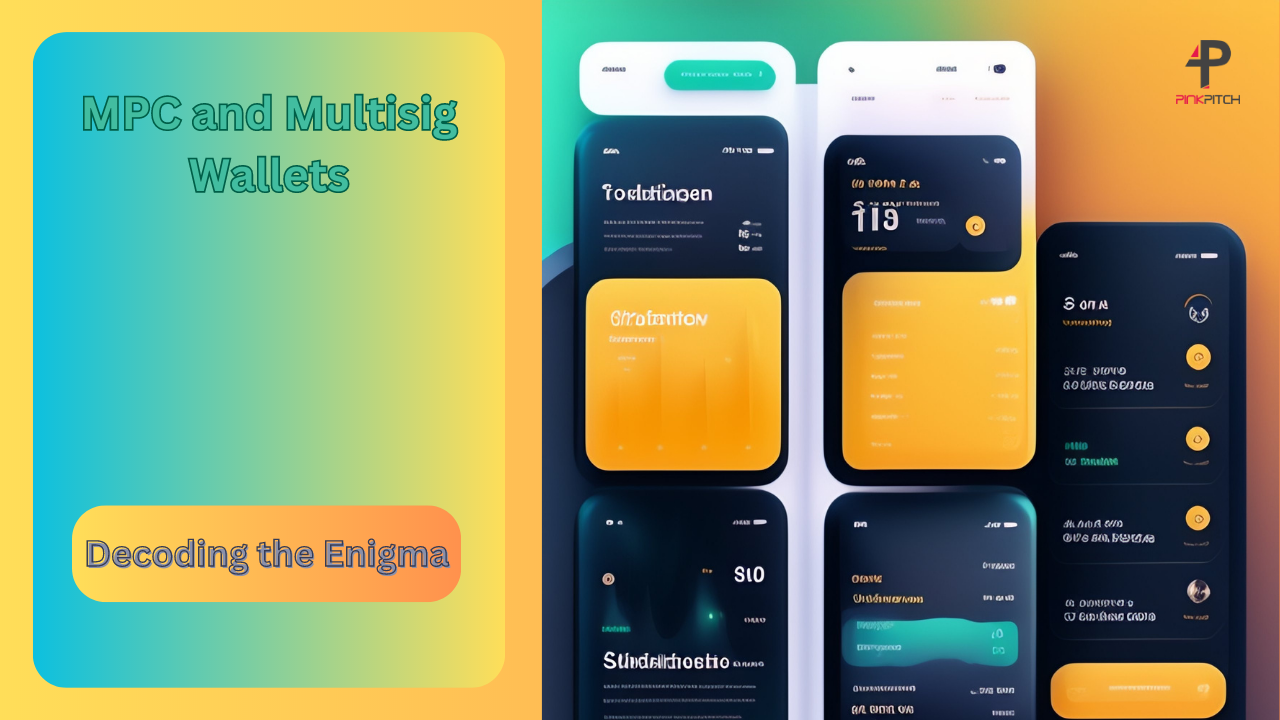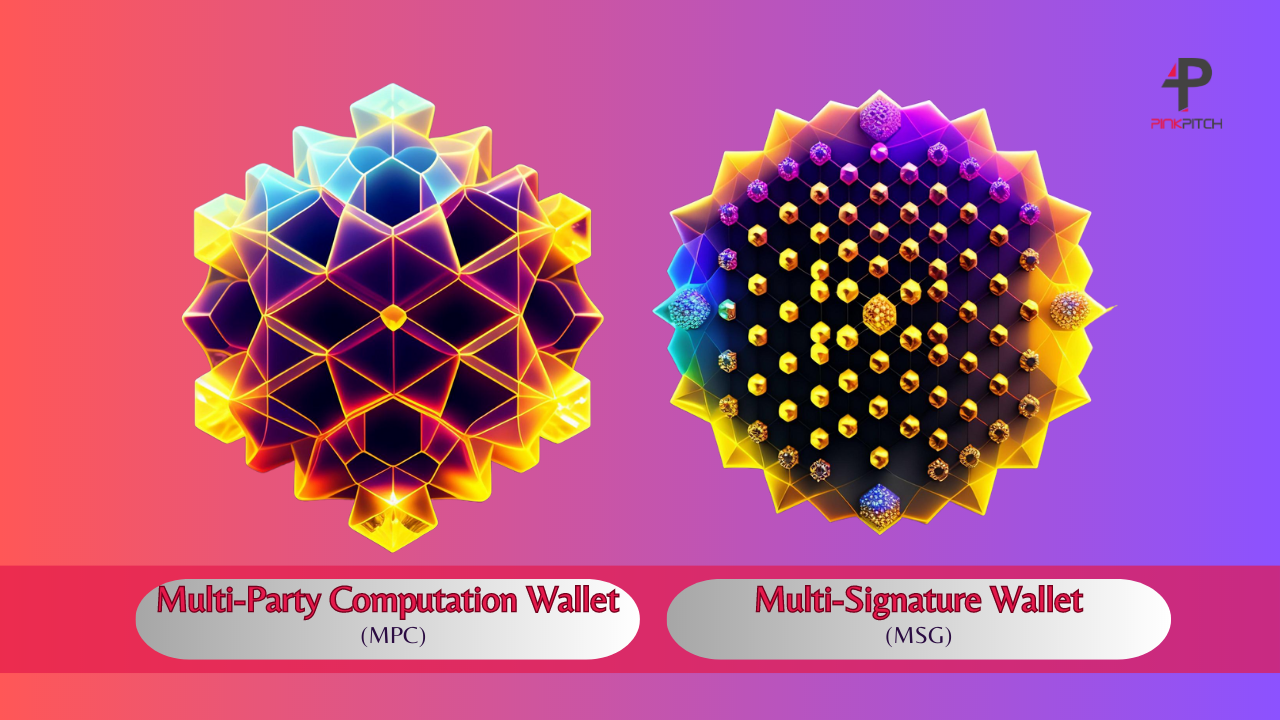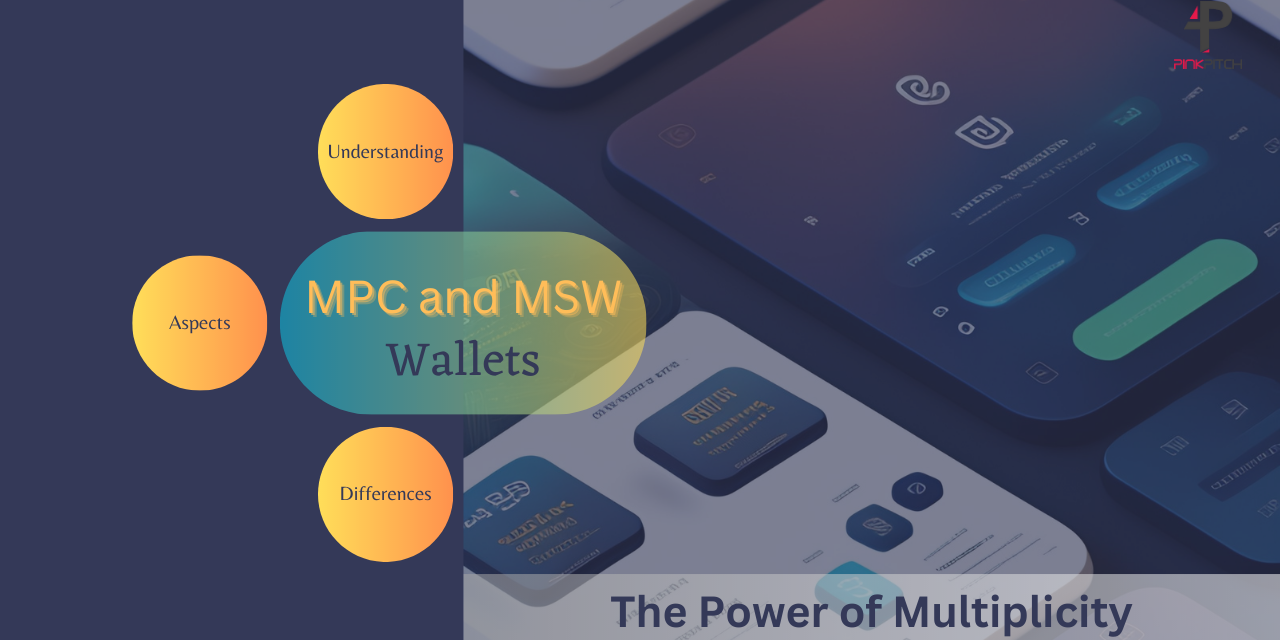MPC and MultiSig: Two Approaches to Securing Your Cryptocurrency Assets
Multi-Party Computation (MPC) Wallet:
MPC stands for "Multi-Party Computation," and it's a cryptographic technique used to secure data and perform computations in a distributed and privacy-preserving manner. An MPC wallet, also known as a secure multi-party computation wallet, is a type of cryptocurrency wallet that leverages this technique to enhance security and privacy.
Instead of relying on a single private key, MPC splits the private key into multiple encrypted shares, distributing them among different parties. Each party holds a portion of the key, and when combined with the others, it enables transactions to be conducted using the wallet. When a party wants to initiate a transaction, they use their specific share of the key to begin the process. The transaction is then divided into multiple parts and sent to other parties who independently sign and approve their respective portions of the transaction. After all, parties have signed, an MPC algorithm combines the individual transaction pieces to generate a valid signature for the complete transaction. Only then is the transaction executed.
In traditional cryptocurrency wallets, the private keys used to sign transactions and control access to funds are usually stored in a single location, whether it's a hardware wallet, software wallet, or exchange platform. This creates a potential point of failure and vulnerability since a single compromise of the private keys could lead to the loss of funds.
Multi-Signature (MultiSig) Wallet:
MultiSig wallet requires multiple approvals or signatures to authorize transactions. Unlike traditional wallets that rely on a single private key, multiSig wallets distribute control over funds among multiple parties. The number of signatures required to execute a transaction is predefined during wallet setup. This added layer of security helps protect against theft and unauthorized access, as attackers would need to compromise multiple keys or gain approval from multiple participants.
MultiSig wallets are particularly useful for organizations, partnerships, and high-value transactions where shared control and increased security are desired.
They operate on the m-of-n scheme, where m out of n parties must sign a transaction to approve it successfully. In this setup, the participants define the specific values of m and n during the wallet configuration. For example, in a 2-of-3 multiSig wallet, any two out of the three authorized parties must sign the transaction. This scheme allows for flexibility in setting the required number of signatures based on the desired level of security and the number of participants involved. By requiring multiple signatures, multiSig wallets ensure that transactions are approved by a consensus of authorized parties, adding an extra layer of security and reducing the risk of unauthorized access or fraudulent activities.

Decoding the Enigma: MPC and MultiSig Wallets Demystified
MPC Wallets:
Threshold Signatures:
MPC wallets often utilize threshold signatures, a cryptographic technique that requires a specific number of participants to collaborate and produce a valid signature. For instance, a 2-of-3 threshold scheme would require signatures from any two out of three designated participants to authorize a transaction. This enables flexibility in choosing the number of participants needed for transaction signing.
Trust Model:
The security of an MPC wallet relies on the trustworthiness of the participating parties. While the risk is distributed across multiple parties, it is essential to ensure that each participant is reliable and does not collude to undermine the security of the wallet. In some cases, formal audits or reputation systems may be used to establish trust among the participants.
Offline Security:
MPC wallets can enhance offline security, allowing transactions to be signed securely even when some or all parties are offline. This feature is particularly valuable for large-scale financial institutions or enterprises that need to safeguard significant amounts of digital assets.
Complex Computation:
MPC is a sophisticated cryptographic protocol that involves significant computational overhead. In practical implementations, the efficiency and speed of the MPC wallet become important considerations, especially for real-time transaction processing.
Compatibility and Adoption:
While MPC offers promising security benefits, widespread adoption of MPC wallets depends on the support of blockchain platforms and wallet applications. Blockchain networks need to integrate and accommodate threshold signatures for MPC wallets to be seamlessly used with various cryptocurrencies.
Research and Development:
The field of MPC and threshold signatures is an active area of research. Cryptographers and developers continually work to improve the efficiency, security, and usability of MPC-based solutions, which can lead to advancements in the field and broader adoption.
Legal and Regulatory Implications:
The use of MPC wallets may have implications in terms of regulatory compliance, as some jurisdictions may have specific requirements regarding key management and custody of digital assets. Users and businesses should ensure that they adhere to the relevant laws and regulations when employing MPC wallets.
Interoperability:
In a diverse blockchain ecosystem with various cryptocurrencies and protocols, ensuring interoperability of MPC wallets can be challenging. Developers need to consider compatibility with different blockchains and ensure that the MPC wallet solution can be used seamlessly across multiple platforms.
Fault Tolerance:
MPC wallets must be designed to handle failures, such as unresponsive or malicious participants. Fault tolerance mechanisms are essential to prevent the entire signing process from being compromised due to a single malfunctioning party.
Trade-offs:
While MPC wallets offer enhanced security, they also introduce certain trade-offs. The complexity of the protocol may lead to higher transaction costs and longer processing times compared to traditional single-signature wallets. Finding the right balance between security and efficiency is an ongoing challenge for developers.
Key Recovery and Backup:
Since the private key in an MPC wallet is distributed among multiple parties, key recovery and backup procedures become more intricate compared to traditional wallets. Proper measures need to be in place to prevent the loss of shares or ensure the ability to reconstruct the private key in case of accidents, such as device failure or the departure of a participant.
User Experience:
The usability of MPC wallets can be a critical factor in their adoption. Developers need to focus on creating user-friendly interfaces and clear documentation to make the setup and management of MPC wallets accessible to a broader audience.
MultiSig Wallets:
Multiple Signatories:
The primary feature of a multiSig wallet is that it requires signatures from multiple parties (often referred to as "cosigners") to authorize a transaction. For example, a 2-of-3 multisig wallet would require two out of three designated individuals to sign off on a transaction before it can be executed.
Signature Combinations:
MultiSig wallets can have various combinations of signatures (e.g., 1-of-2, 2-of-3, 3-of-5, etc.), depending on the level of security and flexibility desired. The more signatures required, the more secure the wallet becomes.
Enhanced Security:
With multisig wallets, the risk of a single individual losing their private key (which could lead to loss of funds) is mitigated since multiple parties are involved in the authorization process.
Protection Against Theft:
In case a hacker gains access to one of the private keys, they still cannot execute a transaction without the required number of additional signatures.
Decentralization of Control:
By distributing the signing authority among different individuals or entities, multisig wallets prevent a single person or entity from having complete control over the funds.
Transaction Flexibility:
Depending on the wallet's setup, transactions can be configured to require signatures from specific combinations of signatories, providing various levels of control and flexibility.
Use Cases:
MultiSig wallets are commonly used by cryptocurrency exchanges, businesses, joint accounts, and in escrow arrangements. They can also be utilized for cold storage setups to protect significant amounts of cryptocurrency.
Implementation:
Different cryptocurrencies and blockchain platforms have their own methods of implementing multisig wallets. The process of creating and using multisig wallets can vary depending on the underlying technology.
Backup and Recovery:
It is essential to have a robust backup and recovery plan for the private keys and public keys associated with a multisig wallet. Losing access to a sufficient number of signatories could result in locked funds.
Usability:
MultiSig wallets can be more complex to set up and use compared to traditional wallets. However, with advancements in user interfaces and wallet management tools, the process has become more accessible over time.

Difference Between MPC and MultiSig:
-
Authorization Mechanism:
MPC Wallets: In an MPC wallet, a cryptographic protocol is used to split a private key into multiple "shares," which are distributed among different parties. No single party has access to the full private key, but when a transaction needs to be signed, a predefined number of participants must collaborate using their shares to generate the required signatures. The collaboration ensures that the private key never exists in its entirety at any point in the process.
Multisig Wallets: MultiSig wallets, on the other hand, require multiple individual private keys, each held by a different signatory (or cosigner). To approve a transaction, a predetermined number of signatures (e.g., 2 out of 3 signers) is required. The transaction can only be executed when the required number of signatures is obtained.
-
Number of Parties Required for Authorization:
MPC Wallets: The number of parties required to authorize a transaction in an MPC wallet can be flexible, depending on the setup. For example, it could be a 2-of-3, 3-of-5, or any other combination, providing various levels of security and redundancy.
Multisig Wallets: MultiSig wallets have a fixed number of signers required for authorization. For instance, a 2-of-3 multisig wallet will always require two signatures out of the designated three.
-
Private Key Security:
MPC Wallets: The private key is never fully reconstructed during the signing process, making it less susceptible to theft or single points of failure.
Multisig Wallets: In a multisig wallet, each individual private key must be secured independently. If any of the private keys are compromised, the wallet's security is at risk.
-
Complexity:
MPC Wallets: Implementing MPC wallets can be more complex due to the cryptographic protocols involved. It may require specialized knowledge and tools.
Multisig Wallets: MultiSig wallets are generally more straightforward to set up and manage, as they involve distributing control among multiple individual private keys.
-
Use Cases:
MPC Wallets: MPC wallets are well-suited for scenarios where privacy and security are paramount, and the participants may not fully trust each other. They are also useful in applications requiring threshold signatures.
Multisig Wallets: Multisig wallets are commonly used in business settings, joint accounts, and as a security measure for large cryptocurrency holdings. They are more suitable when the parties involved have a certain level of trust among themselves.
-
Security Model:
MPC Wallets: MPC is based on a cryptographic security model called "information-theoretic security." It ensures that the private key remains secure even if some participants collude or their shares are compromised. This means that as long as the required number of participants collaborate honestly, the private key remains safe.
Multisig Wallets: MultiSig relies on a computational security model. While it provides robust security when the signers' private keys are kept safe, it is still subject to the security vulnerabilities of traditional cryptographic systems.
-
Trust Requirements:
MPC Wallets: MPC wallets typically require a higher level of trust among participants since they will collectively compute the transaction signatures. The participants must be willing to cooperate and execute the necessary cryptographic operations.
Multisig Wallets: MultiSig wallets involve independent signers, each holding their private key. As long as the individual signers are trustworthy and secure their keys properly, the wallet's security is maintained.
-
Key Management:
MPC Wallets: MPC wallets require a secure key generation and distribution process, ensuring that each participant receives a unique share of the private key. Managing and securely storing the key shares is crucial to the wallet's security.
Multisig Wallets: MultiSig wallets involve managing multiple independent private keys, each belonging to a different entity. The responsibility of key management is distributed among the signers, and coordination may be needed to ensure secure key backups and recovery mechanisms.
-
Privacy:
MPC Wallets: MPC wallets can offer better privacy since the private key is never fully reconstructed during the signing process. The cryptographic computations happen in a distributed manner, providing enhanced confidentiality.
Multisig Wallets: MultiSig wallets do not inherently provide additional privacy measures, as each signer's public key is visible on the blockchain when signing a transaction.
-
Flexibility:
MPC Wallets: MPC wallets can provide more flexibility in defining the authorization rules. For example, the same set of participants might approve one type of transaction, while a different set of participants is required for another type.
Multisig Wallets: MultiSig wallets have fixed authorization rules based on the number of required signatures. Changing the required number of signatures typically requires modifying the wallet setup.
-
Maturity and Adoption:
MPC Wallets: While MPC is a promising technology for improving wallet security, its adoption in mainstream cryptocurrency applications is still relatively limited compared to Multisig wallets.
Multisig Wallets: Multisig wallets have been widely adopted and are well-established in the cryptocurrency ecosystem. Many popular cryptocurrency wallets and exchanges already support multisig functionality.
MPC wallets and MultiSig wallets both provide enhanced security through shared control and multiple authorizations. However, MPC wallets offer a more sophisticated approach by using cryptographic protocols to distribute private key shares, while MultiSig wallets rely on multiple independent private keys held by different parties to authorize transactions.
Also Read:
